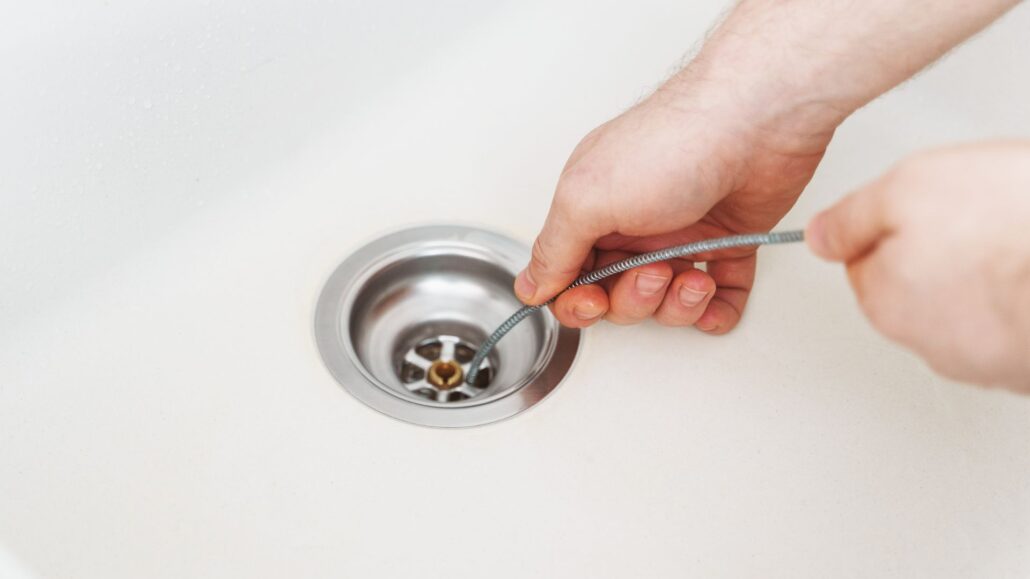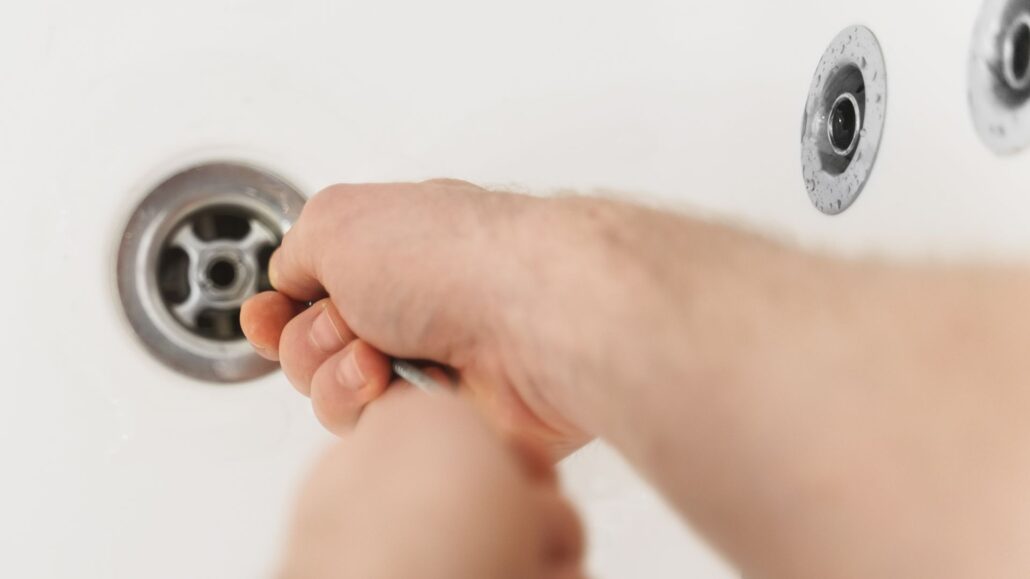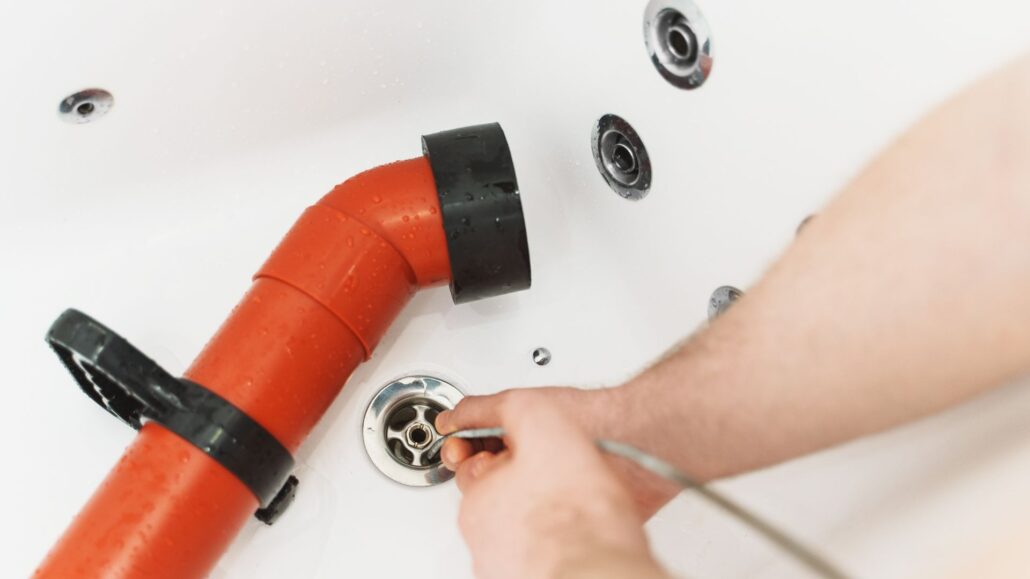Battling a clogged shower drain can throw a wrench into the smooth routine of daily life, turning a simple shower into a frustrating ordeal. The inconvenience of water pooling at your feet as the shower drain slowly surrenders to the relentless build-up of hair, soap scum, and other debris is a nuisance that begs for a swift resolution.
Enter the plumber’s snake—a versatile and practical tool ingeniously designed to navigate through the twists and turns of pipes, tackling significant blockage with precision and ease.
This guide will shine a light on the art of using a drain snake, an essential skill for those keen on DIY plumbing solutions. Whether you’re dealing with a clogged shower drain, a sluggish sink drain, or a bathroom drain that’s lost its way, mastering the use of a drain snake can save the day.
While bathroom sinks and tub drains often share the spotlight in the clogged arena, the shower drain frequently takes centre stage. With a plumber’s snake in hand, you’ll learn how to restore the free flow of water, ensuring your shower remains a place of solace, not a source of stress.
What Are the Causes of Blocked Showers?
A blocked shower drain is more than a mere inconvenience; it’s a symptom of underlying issues that often go unnoticed until they surface as a full-blown clog. The usual culprits behind these blockages are strands of hair that bind with soap scum to create an impenetrable mesh over time. This tangled web of gunk gradually ensnares more debris, which can include everything from shampoo caps to small bits of solidified conditioner, compounding the problem within the shower drain.
Hard water also plays a role, as minerals from the water can precipitate out, clinging to the pipes and any existing build-up, exacerbating the blockage. While the shower grate or drain cover can catch larger objects, the smaller particles slip through, gathering at bends or in the drain opening where they can become lodged firmly.
To effectively address this issue, it’s essential to identify and understand these causes. Only then can you select the right tool—be it a drain snake, a plumbing snake, or even a drum auger with an auger head designed to pierce through stubborn blockages.
While many homeowners may attempt to use a drain snake themselves to dislodge the blockage, in some cases, the expertise of a professional plumber may be required to clear the shower drain thoroughly and restore full functionality.
The Plumber’s Snake Explained

A plumber’s snake, also known as a drain snake or plumbing snake, is a flexible auger used to dislodge clogs that are too stubborn for a plunger to handle. This tool consists of a long, flexible metal cable with a coiled helix-shaped tip or auger head designed to burrow into a clog. As the snake is fed through the drain opening, it can navigate the intricate pathways of the piping system, including the twists and turns of the p-trap beneath sinks and showers.
Using a drain snake typically removes the drain cover or shower grate, feeds the snake into the drain until they feels resistance from the blockage, and then manipulates the tool to break apart or retrieve the obstruction. The simplicity of this tool belies its effectiveness; it can reach deeper into the pipes than other methods and offers a mechanical advantage in physically removing or breaking up clogs. Additionally, using rubber gloves can prevent rust from the snake from staining hands and provide a better grip.
Drain snakes are advantageous because they can tackle a variety of clogs, from hair and soap build-up in shower drains to food particles in kitchen sinks, without the need for harsh chemicals or the expense of a professional plumber. They are also generally easy to operate, only requiring the removal of simple screws on the drain cover to begin the process.
Preparing to Use a Plumber’s Snake

Before attempting to unclog a drain with a plumbing snake, it’s critical to prepare adequately to ensure safety and to increase the chances of success. Start by donning gloves to protect your hands from sharp edges on the metal cable and any debris that may emerge.
Clear the area around the clogged drain, whether it’s a sink, tub, or toilet, to provide ample workspace. Place a towel under the pipe to catch any spillage when the water starts to run or when gunk is retrieved.
Inspect the drain for visible signs of the clog; sometimes, hair and soap residue is evident near the surface and can be removed without snaking. If the blockage isn’t visible, you may need to dismantle the p-trap—the curved section of the pipe that runs past the drain—to check for obstructions. This can often be done manually or with simple tools.
Prepare the drum auger by ensuring its cable is neatly coiled inside the drum. As you feed the snake into the drain, be ready to apply a firm but gentle augering motion to navigate the bends of the trap and pipes. If you feel resistance, it indicates contact with the clog, signifying it’s time to work the plumbing snake in and out to break apart or ensnare the debris causing the blockage. Remember, patience is key when snaking a drain; rushing can lead to damaging the pipes or the snake itself.
How to Use a Plumbers Snake to Unblock a Shower

Unclogging a shower drain with a plumber’s snake can be a straightforward DIY task if you follow these steps:
1. Preparation
Begin by placing a towel on the floor to catch any spillover. Ensure you have gloves to protect your hands from sharp debris and metal parts of the snake.
2. Remove Drain Cover
Carefully remove the shower drain cover. This may require a screwdriver if the cover is fastened with screws.
3. Initial Inspection
Before you snake a shower drain, inspect the drain for visible gunk that can be pulled out by hand or with the use of a wire hanger.
4. Insert the Drain Snake
Feed the end of the drain snake into the shower drain slowly. The goal is to reach the clog without pushing it further down the pipe. Ensure the plumbing snake is unwound from the drum as needed while keeping slight tension to avoid kinks.
5. Encounter the Clog
Gently push the snake through the curves of the drain. When you feel resistance, you’ve likely reached the clog. Instead of forcing the snake, try to hook it onto the clog or break it up.
6. Work the Snake
Once you’ve hooked the snake onto the clog, rotate the handle of the plumbing snake while applying steady pressure. This snaking action helps to dislodge or capture the debris causing the blockage.
7. Remove the Snake
After you’ve broken through the resistance, slowly pull the snake out of the drain, bringing the clog with it. Be prepared for the removal of gunk and water as the clog comes out.
8. Clean Up
Discard the debris. Clean the snake properly to prevent rust and ensure it’s ready for future use.
9. Flush the Drain
Run water to flush the shower drain and check the flow. If the drainage is still slow, you may need to repeat the snaking process.
10. Reassemble and Test
Once the shower drain appears to be clear, replace the drain cover and run water again to ensure the clog is completely gone.
If these steps don’t unclog the drain, it may indicate a more complex issue that requires a plumber’s expertise. Professional drain snakes used by plumbers can tackle more stubborn clogs deeper within the plumbing system.
Ensure a Flowing Future
Maintaining a clear shower drain is vital for daily convenience and hygiene. A plumber’s snake offers an effective DIY solution for common blockages. However, when challenges exceed DIY methods, The Brisbane Plumbers stand ready to assist. For expert services that guarantee peace of mind, schedule an appointment or call The Brisbane Plumbers for top-tier plumbing support in Brisbane. Your flowing future is just a contact away.
